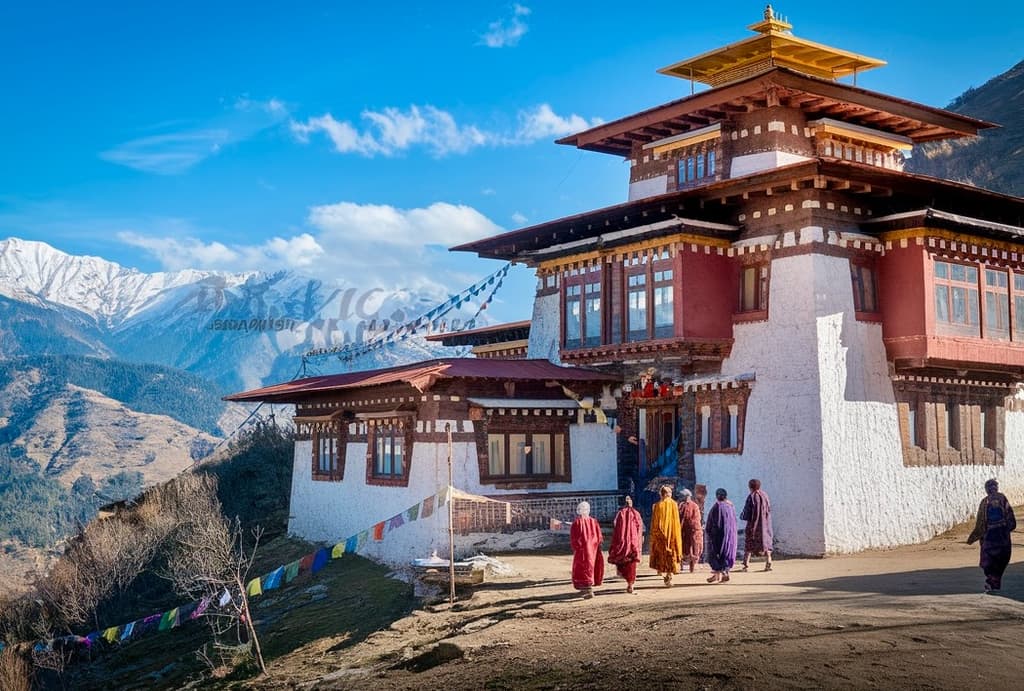Imagine waking up to panoramic views of the majestic Himalayas from your luxury suite, a private guide waiting to escort you through ancient temples, or experiencing a sunset helicopter tour over Mount Everest. Nepal isn't just for backpackers and trekkers – it's becoming an increasingly sought-after destination for discerning travelers seeking exclusive experiences in one of the world's most breathtaking settings. But planning a VIP journey to this Himalayan kingdom requires careful preparation, typically 5-7 months in advance, to navigate its unique seasonal rhythms and secure the finest accommodations and experiences.
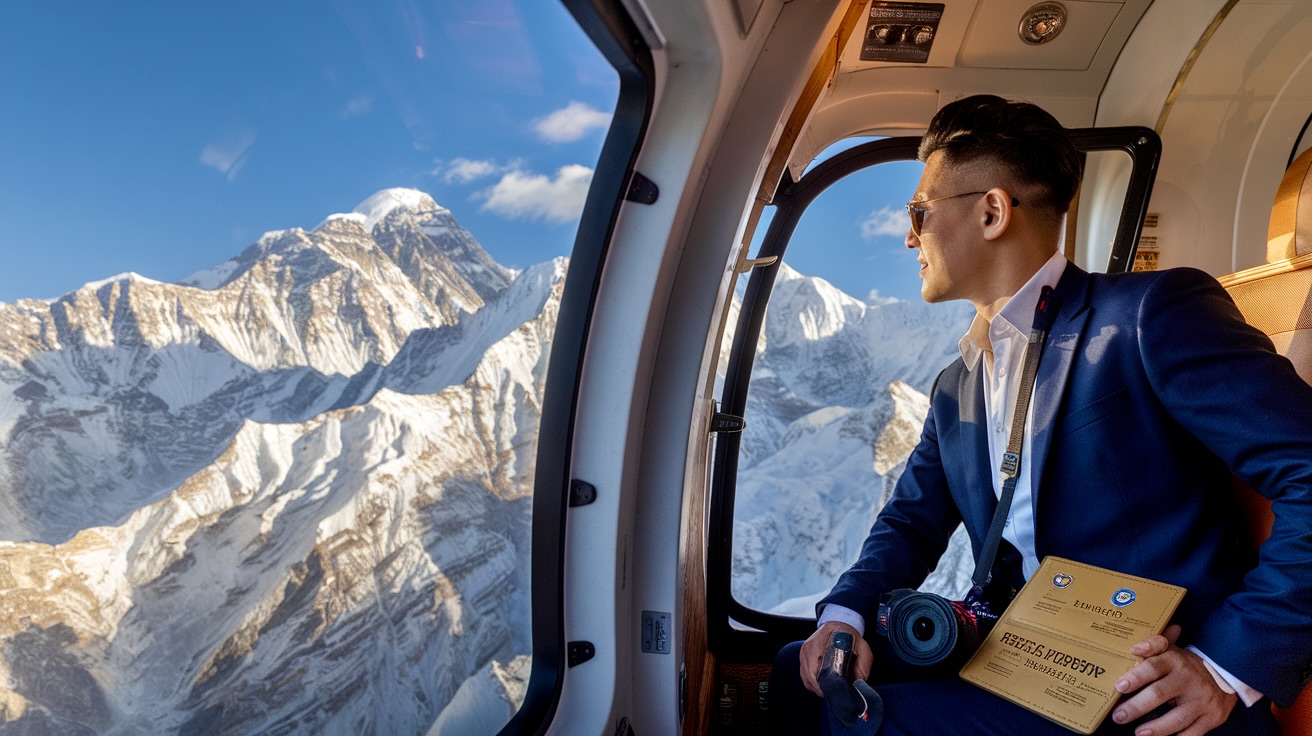
From obtaining the right documentation to booking luxury lodges that frequently sell out during peak seasons (October-November and March-April), a truly exceptional Nepal experience demands meticulous planning. With daily costs for luxury accommodations exceeding NPR 15,000 (approximately $125) and exclusive experiences like private helicopter tours commanding premium prices, creating the perfect high-end itinerary requires both insider knowledge and strategic timing. The good news? The investment yields incomparable rewards – from private tours of UNESCO World Heritage Sites in Kathmandu to personalized wilderness experiences in Chitwan National Park, all while enjoying five-star comfort in a country known for its spectacular landscapes and rich cultural heritage.
In this comprehensive guide, we'll walk you through everything you need to know to craft your perfect VIP Nepal experience – from determining the ideal time to visit and securing necessary permits to arranging luxury transportation and booking exclusive activities that showcase the best this Himalayan nation has to offer. Let's begin planning your extraordinary journey to Nepal.
Perfect Timing: When to Plan Your VIP Nepal Adventure
Timing is everything when planning a luxury trip to Nepal. The right season not only ensures spectacular views of the Himalayas but also enhances your overall experience with favorable weather and cultural opportunities.
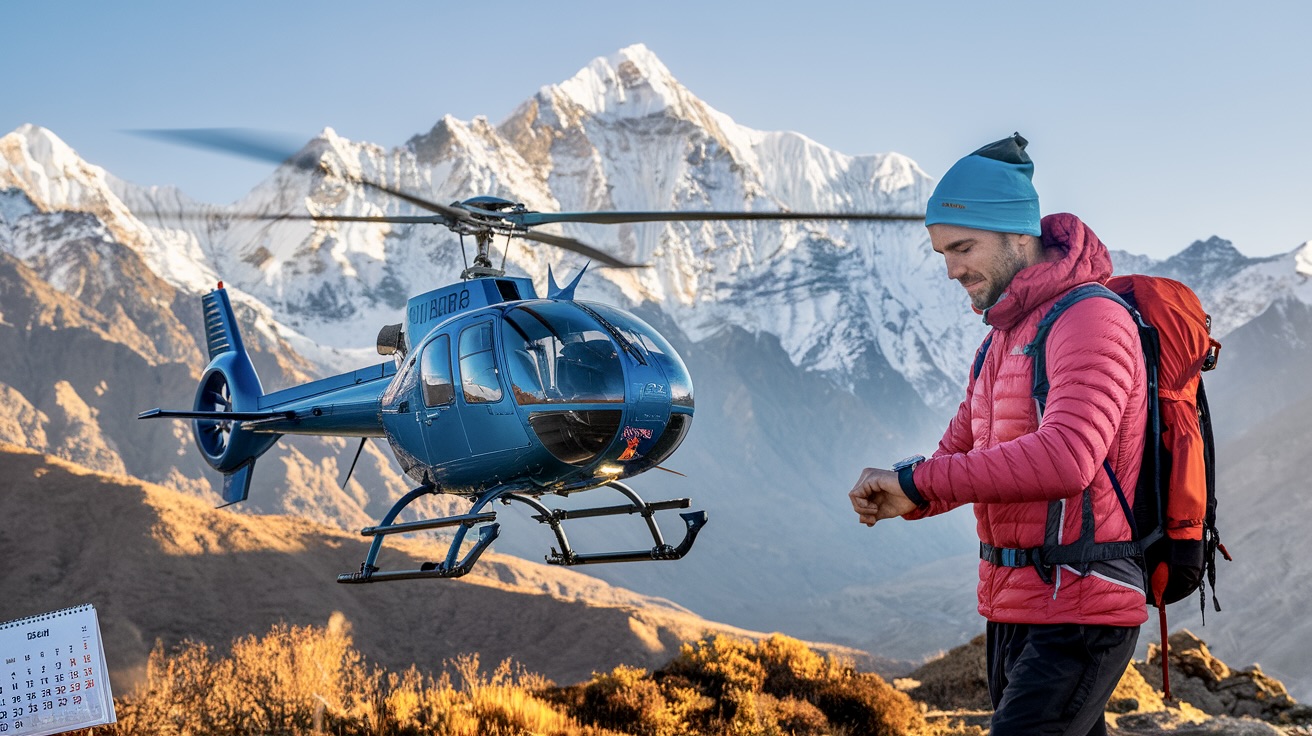
Prime Trekking Seasons: October-November and March-April
The optimal period for VIP travelers to visit Nepal falls between October and February, with October-November being particularly outstanding for trekking adventures. During these months, you'll enjoy:
- Dry weather conditions are ideal for outdoor activities
- Mild temperatures ranging from 65°F to 89°F
- Crystal-clear mountain views perfect for photography
- Vibrant cultural festivals, including Dashain and Tihar
For spring enthusiasts, March-April offers another excellent window with moderate temperatures between 20°C to 30°C. This season transforms Nepal's landscapes with blooming rhododendrons and provides exceptional trekking conditions for prestigious routes like the Annapurna Circuit and Everest Base Camp.
Weather Considerations and Seasons to Avoid
While Nepal offers year-round beauty, certain periods should be avoided for a truly luxurious experience:
- Monsoon Season (June-August): Heavy rainfall creates challenging conditions with high humidity, potential landslides, and increased risk of mosquito-borne diseases
- Late April-May: Rising temperatures and increasing humidity can make outdoor activities uncomfortable
Winter (late November to February) offers a unique experience with cooler temperatures (4°C to 20°C) and fewer crowds, making it ideal for lower-altitude treks and exclusive cultural experiences. Late January and February provide exceptional wildlife viewing opportunities in national parks with clearer skies enhancing visibility.
Planning Timeline: Starting 5-7 Months in Advance
For a seamless VIP experience in Nepal, proper advance planning is essential:
- 5-7 months before: Begin researching and selecting your preferred luxury accommodations, especially if traveling during peak seasons (October-November)
- 4-5 months before: Book helicopter tours and exclusive experiences that typically fill up quickly
- 3-4 months before: Secure your preferred trekking guides and specialized services
This timeline ensures you'll have access to the finest accommodations and experiences, particularly important during autumn (September to November) when luxury properties experience high demand due to the perfect trekking conditions and cultural festivals.
With your ideal timing now planned for your Nepal adventure, let's examine the essential documentation you'll need for a smooth entry into this Himalayan paradise. Proper paperwork is crucial for VIP travelers who expect convenience and efficiency at every step of their journey.
Essential Documentation for a Smooth Entry
Now that we've explored the ideal timing for your VIP Nepal adventure, it's crucial to focus on the documentation required for a seamless entry into this Himalayan paradise. Proper preparation of your travel documents will ensure your luxury experience begins without unnecessary complications at the border.
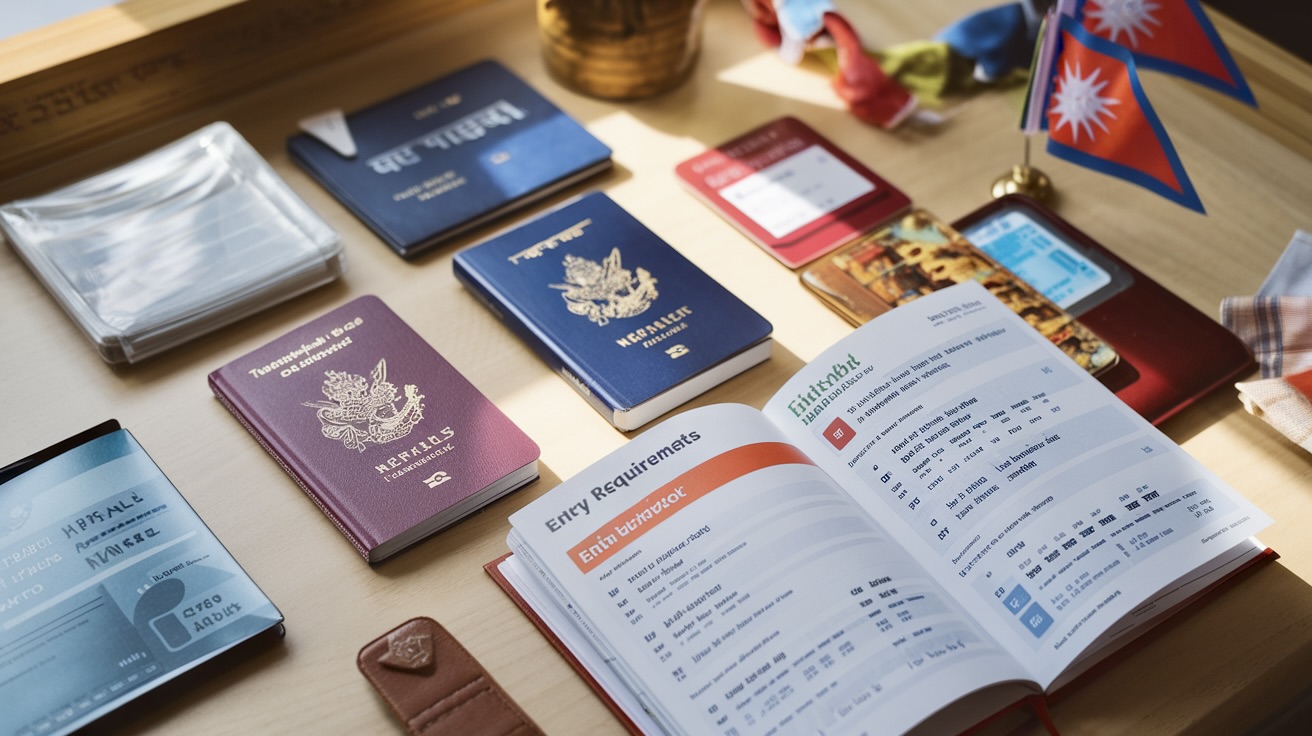
Visa Requirements and Application Process
For your VIP journey to Nepal, a valid passport is the fundamental requirement—ensure it has at least six months of validity beyond your planned departure date and contains at least one blank visa page for your Nepal visa. Most nationalities can obtain a tourist visa upon arrival at Tribhuvan International Airport, though some countries require advance applications through Nepalese diplomatic missions.
Tourist visas allow a maximum stay of 90 days in Nepal. Should your luxury itinerary extend beyond this period, 30-day extensions are available through the Department of Immigration in Kathmandu. For a smooth entry process, prepare supporting documentation including:
- Proof of onward travel arrangements
- Confirmation of luxury accommodation bookings
- Comprehensive travel insurance documentation
- Vaccination certificates (recommended, though not mandatory)
Upon arrival, you'll need to complete entry and departure cards, so having your accommodation details readily accessible will streamline this process.
Trekking Permits: TIMS Cards and Conservation Area Permits
For discerning travelers planning exclusive trekking experiences in Nepal's majestic mountains, additional permits are mandatory. The Tourism Information Management System (TIMS) card is a requirement for all trekkers, serving as both a safety measure and a means to support sustainable tourism infrastructure.
Conservation Area Permits are necessary when your itinerary includes protected regions such as the Annapurna Conservation Area or Sagarmatha National Park (home to Mount Everest).
Travel Insurance Considerations for High-Altitude Adventures
When venturing to Nepal, particularly for high-altitude activities, comprehensive travel insurance is not merely recommended—it's essential. Your luxury insurance package should specifically cover:
- Emergency helicopter evacuation from remote areas
- Medical treatment at high altitudes
- Trip cancellation or interruption
- Coverage for adventure activities like trekking, climbing, or paragliding
- Adequate coverage limits for Nepal's unique geographical challenges
Ensure your policy explicitly covers activities above certain elevations, as standard policies often exclude adventures above 3,000-4,000 meters—well below many popular Nepalese trekking destinations.
With your essential documentation properly arranged, you'll be ready to turn your attention to the next critical aspect of your VIP journey: creating your luxury Nepal budget, which we'll explore in detail in the following section.
Creating Your Luxury Nepal Budget
Now that you've ensured all your documentation is in order for a smooth entry into Nepal, it's time to focus on planning your luxury budget. Understanding the financial aspects of your VIP journey will help you make informed decisions about accommodations, daily expenses, and special experiences that align with your expectations for comfort and exclusivity.
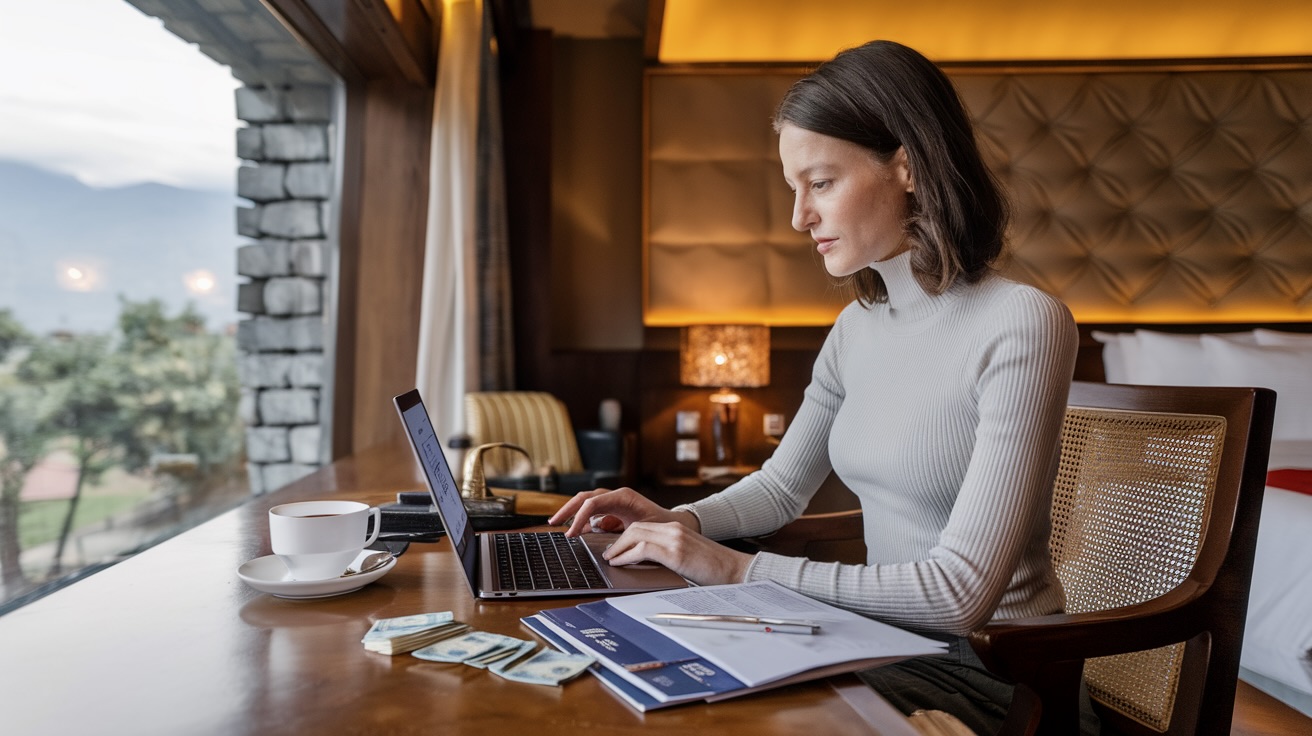
A. Accommodation Costs: From Basic to Premium Options
Luxury accommodations in Nepal blend traditional Nepalese craftsmanship with modern amenities, offering a range of options to suit different preferences:
- Heritage Hotels: Historically significant properties converted into luxurious accommodations
- Eco-Luxury Resorts: Environmentally conscious properties offering premium experiences
- Jungle Lodges: Upscale accommodations in natural settings, particularly in areas like Chitwan
Price ranges for luxury accommodations:
Accommodation Type (Nightly Rate Range)
Boutique Luxury Hotels - $150 - $500
Premium Heritage Properties - $400 - $800
Eco-Luxury Resorts - $200 - $600
Most luxury tour packages include stays at five-star properties with personalized service and amenities designed to enhance your comfort throughout your journey.
B. Daily Expenses Breakdown for VIP Travelers
Beyond accommodations, VIP travelers should budget for various premium services that enhance the Nepal experience:
Transportation Costs:
- Private airport transfers (included in most luxury packages)
- Domestic flights between destinations: $100 - $400 per segment
- Helicopter tours and transfers: $1,200 - $6,500 for private charters
Exclusive Activities:
- Private guided cultural tours: $200 - $600 per day
- Wildlife safaris with expert naturalists: $300 - $1,200
- Wellness programs and spa treatments: $100 - $500 per session
- Personalized concierge services: Often included but may incur additional fees for special requests
Dining:
Fine dining experiences featuring local and international cuisine are typically included in luxury packages, though special arrangements may incur additional costs
C. Trekking Expedition Costs and Service Levels
Luxury trekking in Nepal offers a stark contrast to standard trekking experiences, with significant price variations based on service levels:
Luxury Everest Base Camp Heli-Trek:
- Price range: $5,000 - $10,000 per person
- Includes helicopter flights to avoid difficult sections, premium accommodations where available, and personal porters
Multi-Destination Luxury Adventures:
- Price range: $5,000 - $12,000 per person
- Covers multiple regions with a combination of trekking, cultural experiences, and wildlife encounters
Short Luxury Tours (Kathmandu and Pokhara):
- Price range: $2,000 - $5,000 per person
- Focused on cultural highlights with premium accommodations and services
Seasonal Considerations:
- High season (spring: March-May and autumn: September-November): Expect to pay premium rates due to ideal weather conditions
- Low season: Discounted rates available but may come with weather limitations
A comprehensive 12-day luxury itinerary typically costs between $6,000 and $12,000 per person, including luxury hotels, private tours, helicopter flights, and personal concierge services.
Cost-Saving Tips:
- Book early for the best rates and availability
- Consider traveling in small groups to share certain costs
- Select multi-destination packages for better value
- Choose reputable luxury tour operators like Luxury Holidays Nepal with established relationships with premium properties
With your luxury budget well-planned, you'll be ready to explore the must-visit destinations that Nepal offers for the discerning traveler. Next, we'll discover the exclusive locations that should be on every VIP traveler's itinerary, from ancient cultural sites to breathtaking Himalayan vistas that showcase Nepal's unparalleled beauty.
Must-Visit Destinations for the Discerning Traveler
Now that we have established your luxury Nepal budget, it's time to explore the exceptional destinations that will form the cornerstone of your VIP experience. Nepal offers a perfect blend of cultural treasures and natural wonders that cater specifically to discerning travelers seeking exclusive experiences.
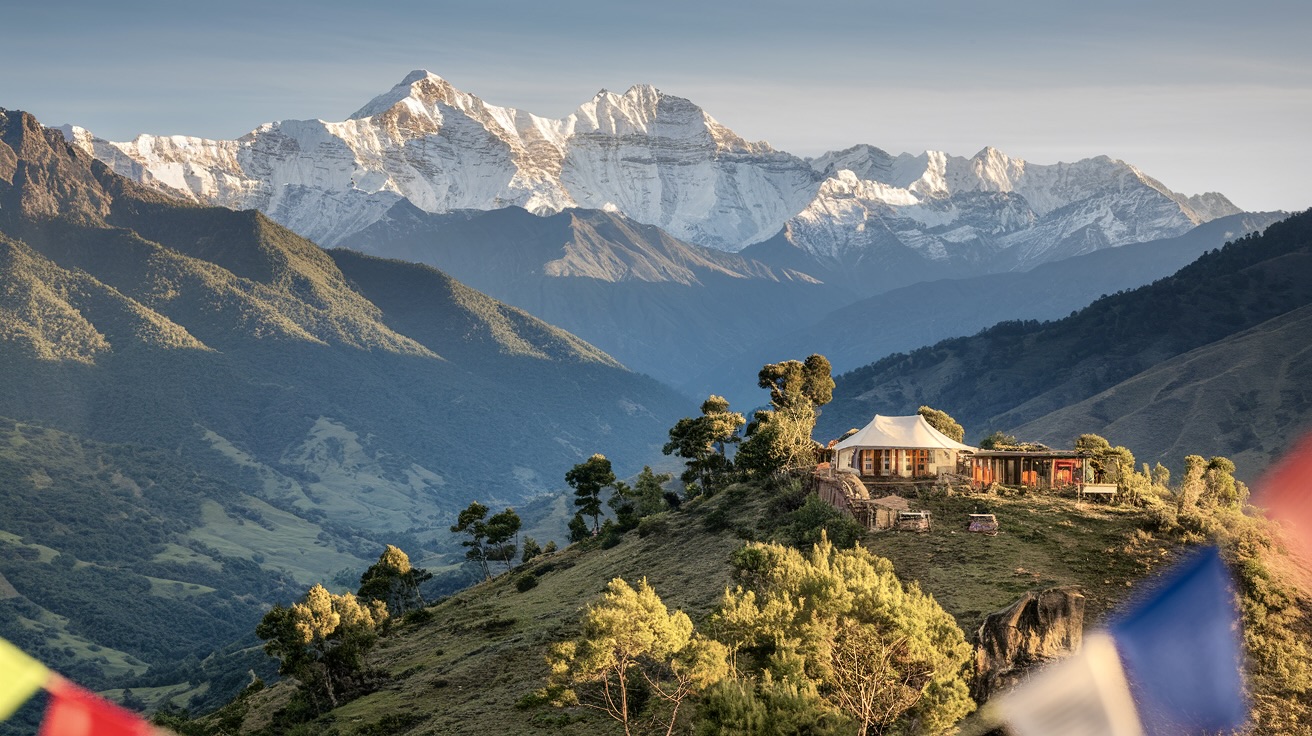
A. Cultural Treasures: Kathmandu Durbar Square and Bhaktapur
The Kathmandu Valley houses some of Nepal's most significant cultural landmarks. As part of your luxury itinerary, the Kathmandu Durbar Square stands as an essential stop, showcasing centuries of architectural brilliance and royal heritage. Here, private English-speaking guides (with options for French, Italian, Chinese, Japanese, or Russian speakers) can provide in-depth historical context unavailable to regular tourists.
Nearby Bhaktapur offers an immersive journey into Nepal's medieval past. Your VIP tour can include exclusive access to cultural performances and private meetings with master craftsmen who maintain ancient artistic traditions. These cultural explorations can be tailored to your specific interests, creating a personalized heritage experience that transcends ordinary tourism.
B. Natural Wonders: Mount Everest and Annapurna Range
The Everest Region represents the pinnacle of luxury adventure tourism in Nepal. VVIP and VIP packages include private helicopter flights that provide breathtaking aerial views of the world's highest peak without the physical demands of traditional trekking. For those seeking a more immersive experience, the Everest Base Camp Luxury Hotel Trek offers challenging adventure complemented by premium accommodations.
The Annapurna Range presents another extraordinary option with upscale trekking routes designed for comfort without compromising on authentic mountain experiences. Luxury lodges positioned along scenic trails provide five-star amenities amidst some of the world's most spectacular landscapes. Both regions are carefully selected to provide unique perspectives on Nepal's natural majesty while maintaining the highest standards of service.
C. Wildlife Encounters at Chitwan National Park
Chitwan National Park offers exclusive wildlife experiences for luxury travelers. Private jungle safaris can be arranged with expert naturalists who maximize your chances of spotting the park's renowned Bengal tigers, one-horned rhinoceros, and diverse bird species. Your VIP package can include private jeep tours, exclusive boat excursions along the Rapti River, and personalized wildlife photography sessions at optimal viewing times.
Luxury accommodations at the park's perimeter provide refined comfort while maintaining an authentic connection to the natural environment. Many high-end properties offer private balconies overlooking watering holes where wildlife regularly gathers, creating personal wildlife viewing opportunities from the comfort of your suite.
D. Relaxation and Adventure in Pokhara
Pokhara serves as the perfect destination for combining relaxation with adventure. This scenic lakeside town offers wellness and yoga retreats specifically designed for VIP travelers seeking rejuvenation. Luxury accommodations provide spectacular views of the Annapurna mountains reflected in the serene waters of Phewa Lake.
For the adventure-minded, private paragliding experiences can be arranged with professional pilots who know exactly how to showcase the region's dramatic topography. Exclusive boating experiences on Phewa Lake at sunrise or sunset offer magical photographic opportunities, while private dinners can be arranged at select viewpoints that capture Pokhara's natural beauty.
With these exceptional destinations incorporated into your itinerary, your VIP Nepal experience will perfectly balance cultural immersion with natural splendor. With your destinations selected, we'll next explore the transportation and logistics necessary to ensure maximum comfort as you move between these remarkable locations.
Transportation and Logistics for Maximum Comfort
Now that you've explored Nepal's most extraordinary destinations for discerning travelers, it's essential to consider how you'll travel between these remarkable locations in maximum comfort and style. Nepal's challenging terrain requires thoughtful transportation planning, especially for VIP travelers seeking convenience and luxury.

A. International Flights and Arrival Options
Tribhuvan International Airport serves as Nepal's main gateway for international travelers. As a VIP visitor, you'll want to arrange priority arrival services to bypass the typical airport congestion. Several international carriers offer business and first-class options to Kathmandu, ensuring your journey begins in comfort. Upon arrival, pre-arranged airport taxis with fixed, non-negotiable fares can transport you to your accommodation, though VIP travelers typically prefer to arrange private transfers in advance through their luxury accommodation or tour provider.
B. Domestic Air Travel vs. Private Ground Transportation
For navigating between Nepal's major destinations, domestic flights offer the most time-efficient option. Premium carriers like Buddha Air and Yeti Airlines connect major cities with reliable service and scenic routes. These airlines also offer spectacular mountain flights over Everest—an exclusive experience worth considering for your itinerary.
For ground transportation, tourist buses represent an upgraded alternative for longer journeys, providing comfort and scheduled meal stops. However, VIP travelers typically prefer private vehicle rentals with professional drivers, as self-driving can be challenging given Nepal's unique road conditions. A private car, jeep, or SUV with an experienced local driver offers flexibility to stop at viewpoints and hidden gems while navigating Nepal's sometimes difficult roads with expertise.
C. Navigating Nepal's Challenging Terrain in Style
Nepal's mountainous landscape presents unique transportation challenges, with roads often affected by natural conditions like landslides during monsoon season. The Mahendra Highway and Prithvi Highway connect major cities including Kathmandu and Pokhara, but travel times can be longer than expected due to road conditions.
For accessing remote luxury destinations, helicopter services provide an exclusive alternative, particularly for reaching trekking areas like Lukla or Everest Base Camp without the physical demands of long treks.
In urban areas like Kathmandu, modern ride-sharing apps such as Pathao and inDriver offer convenient transportation options, particularly valuable in the evenings when public transportation becomes limited after 8 PM. For short distances within tourist districts like Thamel, premium taxis can be arranged through your accommodation.
For truly unique experiences, consider the Manakamana Cable Car, which offers spectacular views while traversing challenging terrain—a perfect blend of practicality and scenic enjoyment for the luxury traveler.
With your transportation arrangements carefully planned, the next consideration for your VIP Nepal journey is securing the finest accommodations. Let's explore the luxury lodging options and essential advance booking strategies to ensure your stay matches the exclusivity of your journey.
Luxury Accommodations and Advance Bookings
Now that we've explored the transportation options that ensure maximum comfort during your VIP journey through Nepal, it's time to focus on where you'll be staying. Securing the right accommodations is crucial for an elevated experience in this Himalayan nation.

Securing Premium Lodging 4-6 Months Ahead
To guarantee your stay at Nepal's most exclusive properties, booking 4-6 months in advance is essential. Properties like Dwarika's Hotel in Kathmandu, with its 80 elegantly designed rooms featuring intricate wood carvings and Newari architecture, are in high demand among discerning travelers. Similarly, Dwarika's Resort in Dhulikhel offers 39 luxury suites with panoramic mountain views and requires significant advance planning to secure.
The exclusive Shinta Mani Mustang in the historical Mustang region and Royal Mustang Resort, with its connections to the region's former royal family, both offer limited accommodations that fill quickly during peak seasons. By planning months ahead, you'll have access to the best room categories and personalized service arrangements.
Specialized Accommodations Along Trekking Routes
For luxury trekkers, Nepal offers premium lodging options even in remote areas. Tiger Mountain Lodge, positioned 1,000 feet above Pokhara Valley, provides breathtaking views of three major peaks while offering guided village walks, bird watching, and meditation sessions—perfect for acclimatization before or recovery after a trek.
The Happy House in Phaplu, connected to Sir Edmund Hillary's legacy, presents a serene mountain escape with wellness activities. For wildlife enthusiasts, Tiger Tops Tharu Lodge adjacent to Chitwan National Park and Burhan Wilderness Camps in Bardiya offer sophisticated accommodations amid nature, emphasizing ethical tourism practices and conservation efforts.
Boutique Hotels and Heritage Properties in Urban Centers
Nepal's urban areas showcase exceptional boutique and heritage accommodations. Beyond Dwarika's flagship property in Kathmandu, The Nanee in Bhaktapur provides unique cultural immersion through artisan experiences and traditional cooking classes. This renovated heritage building allows guests to experience authentic Newari culture while enjoying modern amenities.
Kavyaa Himalayas in Nagarkot combines stunning mountain vistas with wellness activities just outside Kathmandu. These properties offer intimate settings with personalized service, often featuring fewer than 50 rooms and staff trained to anticipate the needs of VIP guests.
With your luxury accommodations secured, you'll be perfectly positioned to enjoy the exclusive activities and experiences that Nepal offers to VIP travelers, which we'll explore in our next section.
Exclusive Activities and Experiences
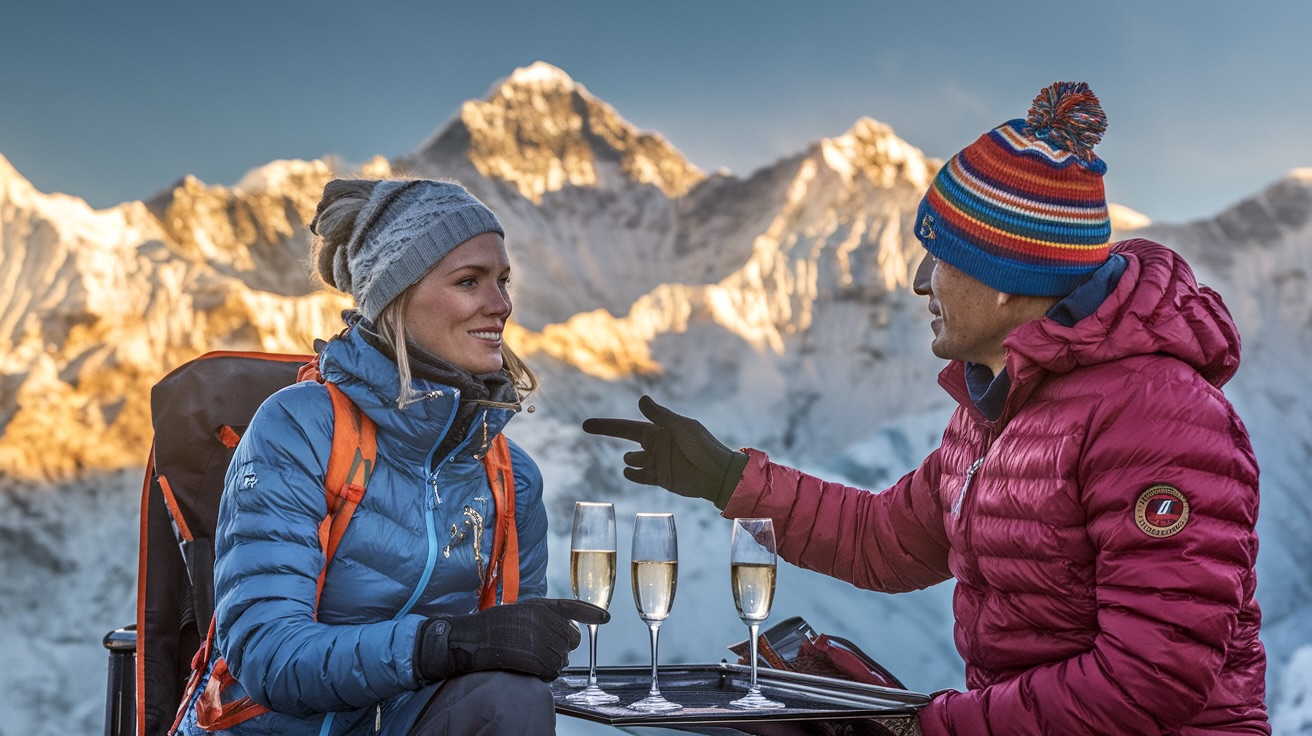
Private Guided Tours of Cultural Sites
Nepal's cultural heritage is simply breathtaking, but the regular tourist experience can feel rushed and impersonal. VIP travelers deserve something more exclusive.
When you book a private guide for Kathmandu's UNESCO sites, you're not just getting a tour – you're getting a personalized journey with experts who often have connections to these sacred places. Your guide might arrange for a blessing from a high priest at Pashupatinath Temple or access to normally restricted areas of Bhaktapur Durbar Square.
For something truly special, arrange a private evening tour of Boudhanath Stupa when most tourists have left. The atmosphere transforms completely as locals perform their evening kora (circumambulation), and you can join a meditation session with resident monks – something regular visitors rarely experience.
We can also arrange private meetings with master artisans who create Nepal's famous thangka paintings or intricate wood carvings. You'll witness centuries-old techniques firsthand and perhaps even try your hand at these ancient crafts.
Helicopter Tours and Premium Trekking Experiences
Nothing says VIP like soaring over the Himalayas in your private helicopter. While regular tourists trudge uphill for days, you can have breakfast in Kathmandu and lunch at Everest Base Camp.
The standard Everest helicopter tour is just the beginning. Consider these premium options:
- Helicopter-assisted treks: Trek only the most scenic sections while skipping the grueling parts
- Remote landing experiences: Touch down on high-altitude plateaus normally accessible only to serious mountaineers
- Multi-day heli-adventures: Island-hop between luxury lodges across different regions
For trekking purists who still want comfort, several premium lodges now dot the popular trekking routes. The Everest Summit Lodges and Ker & Downey lodges offer hot showers, gourmet meals, and even heated rooms – unheard of luxuries at these altitudes.
Adventure Activities Requiring Advance Reservations
The most exclusive adventures in Nepal require serious planning – sometimes up to a year in advance.
Paragliding in Pokhara is popular, but have you considered a multi-day paragliding journey? These "para-trekking" expeditions let you soar between valleys, landing in remote villages for overnight stays. With only a handful of qualified guides offering this service, book at least six months ahead.
White water rafting gets the VIP treatment too. Private expeditions on the Sun Kosi or Karnali rivers can be customized with luxury camping setups each night – think portable hot tubs and gourmet chefs on the riverbank.
For the ultimate bragging rights, Nepal offers limited slots for:
- Heli-skiing in untouched Himalayan powder
- Ultra-marathon participation across the Annapurna circuit
- Private mountaineering expeditions to 7000m peaks
Remember that the most extraordinary experiences often fly under the radar. Your luxury travel planner should have connections to arrange private invitations to seasonal festivals, royal family events, or traditional ceremonies not listed in any guidebook.
Final Preparations for VIP Travelers
Now that we've explored the exclusive activities and experiences that await discerning travelers in Nepal, it's time to focus on those final crucial preparations that will ensure your VIP journey is flawless from start to finish. The following considerations will help you maintain comfort and convenience throughout your luxury Nepalese adventure.

Specialized Packing List for Nepal's Varied Climates
Nepal's diverse topography creates distinct microclimates that require thoughtful packing. For autumn (October-November) and spring (March-May) travel, prepare layered clothing suitable for temperature variations between valleys and mountainous regions. Include:
- Lightweight, moisture-wicking attire for lower elevations
- High-quality insulating layers for cooler evenings
- Premium weatherproof outerwear for unexpected weather changes
- UV-protective accessories for high-altitude sun exposure
- Formal attire for exclusive dining experiences in Kathmandu
Luxury travelers should note that while premium outdoor gear is essential for trekking experiences, elegant attire is equally important for cultural visits to temples and upscale dining establishments in urban centers.
Communication and Connectivity Solutions
Maintaining seamless communication is essential for VIP travelers. Consider these connectivity options:
- Arrange for an international roaming plan with your current provider
- Secure a local SIM card upon arrival at Kathmandu's international airport
- Confirm Wi-Fi availability at your luxury accommodations
- Download offline maps and translation apps before departure
- Carry portable charging solutions for remote areas
During peak seasons, network congestion may occur in popular destinations like Pokhara and along trekking routes. Luxury Holidays Nepal can arrange private communication solutions for clients requiring constant connectivity, even in remote areas.
Currency and Payment Considerations for Luxury Travel
For a truly frictionless experience, proper financial planning is crucial:
- Nepali Rupee (NPR) is the official currency, though some luxury establishments accept major foreign currencies
- Inform your bank of travel dates to prevent card blocks on international transactions
- Carry a moderate amount of cash for smaller establishments and authentic markets
- High-end hotels and restaurants in Kathmandu accept major credit cards
- Consider acquiring small denominations for gratuities at luxury services
- While luxury accommodations typically offer currency exchange services, favorable rates can often be found at authorized exchange counters in Kathmandu. Remember that in remote trekking areas and smaller towns, cash remains the primary payment method, even for premium services.
For VIP travelers seeking ultimate convenience, Luxury Holidays Nepal Pvt. Ltd. offers concierge services that can handle currency needs throughout your journey, allowing you to focus entirely on experiencing Nepal's natural beauty and cultural richness.
Conclusion
Planning a VIP trip to Nepal requires thoughtful preparation and attention to detail, ideally beginning 5-7 months before your intended travel date. From securing the necessary documentation and permits to booking luxury accommodations and exclusive experiences, each element contributes to creating a seamless, high-end adventure in this Himalayan paradise. Remember that timing is crucial—with October-November and March-April offering the most favorable conditions for trekking and sightseeing, while avoiding the challenging monsoon season from June to September.
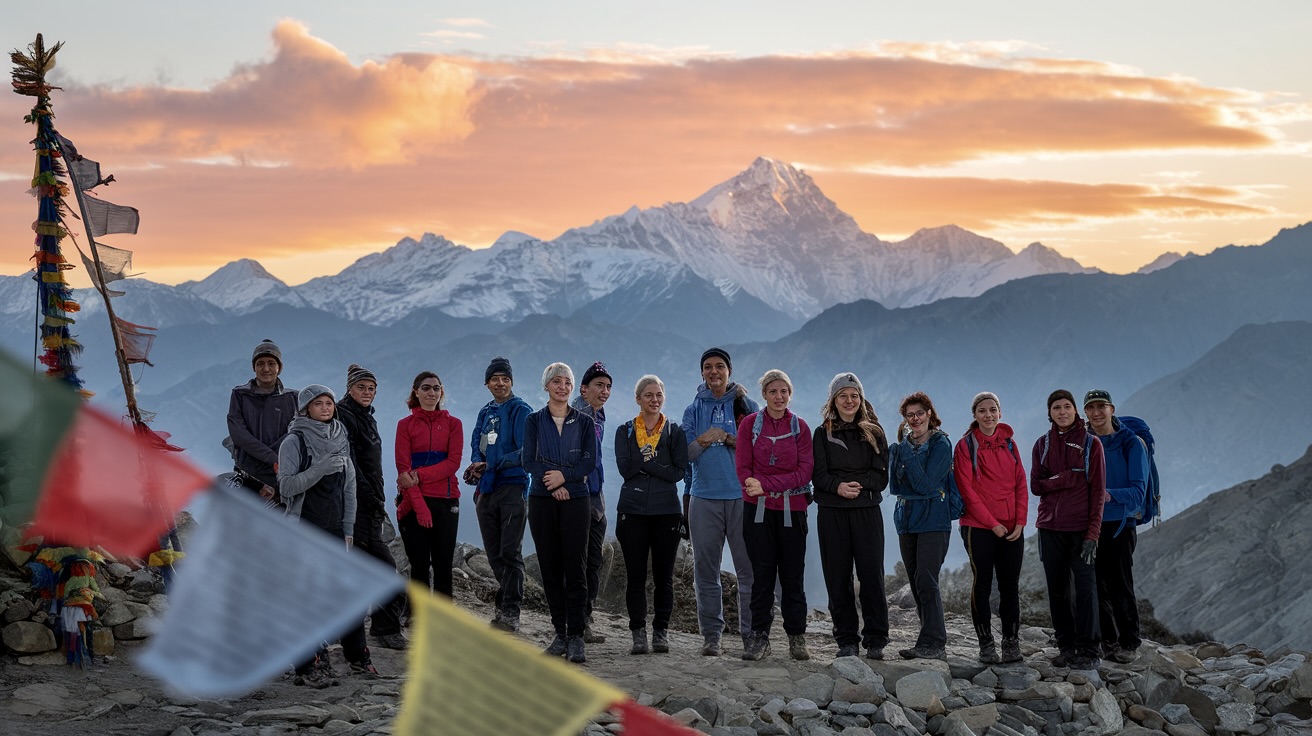
Your Nepal journey promises to be transformative, whether you're admiring the ancient temples of Kathmandu, taking in panoramic Himalayan views from Nagarkot, or experiencing wildlife encounters in Chitwan National Park. While a structured itinerary ensures you'll experience Nepal's finest offerings, leave room for spontaneity to truly immerse yourself in the country's rich cultural tapestry. With careful planning and the right resources, your VIP Nepal adventure will deliver unforgettable moments and the perfect balance of luxury, adventure, and cultural enrichment that will resonate long after you've returned home.




